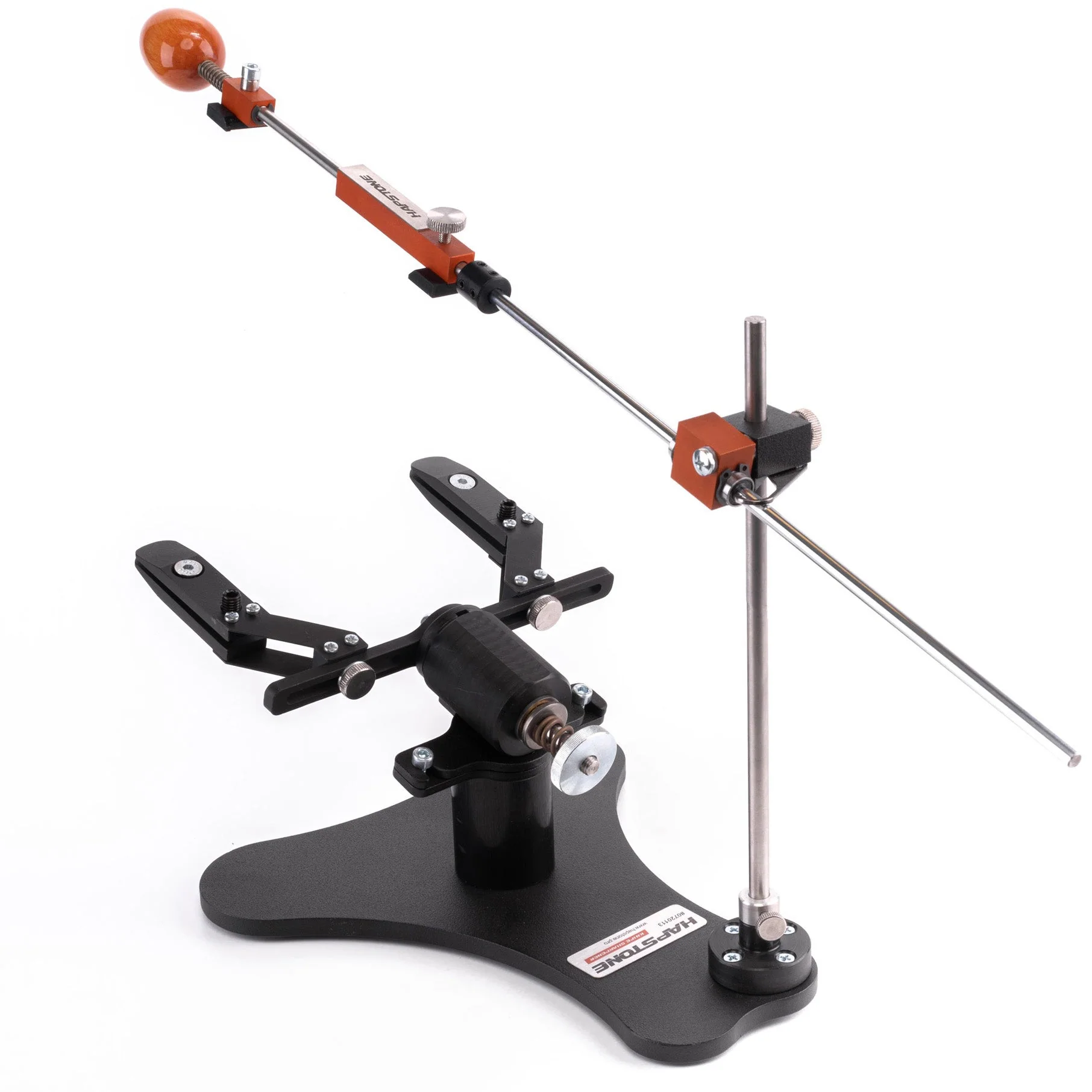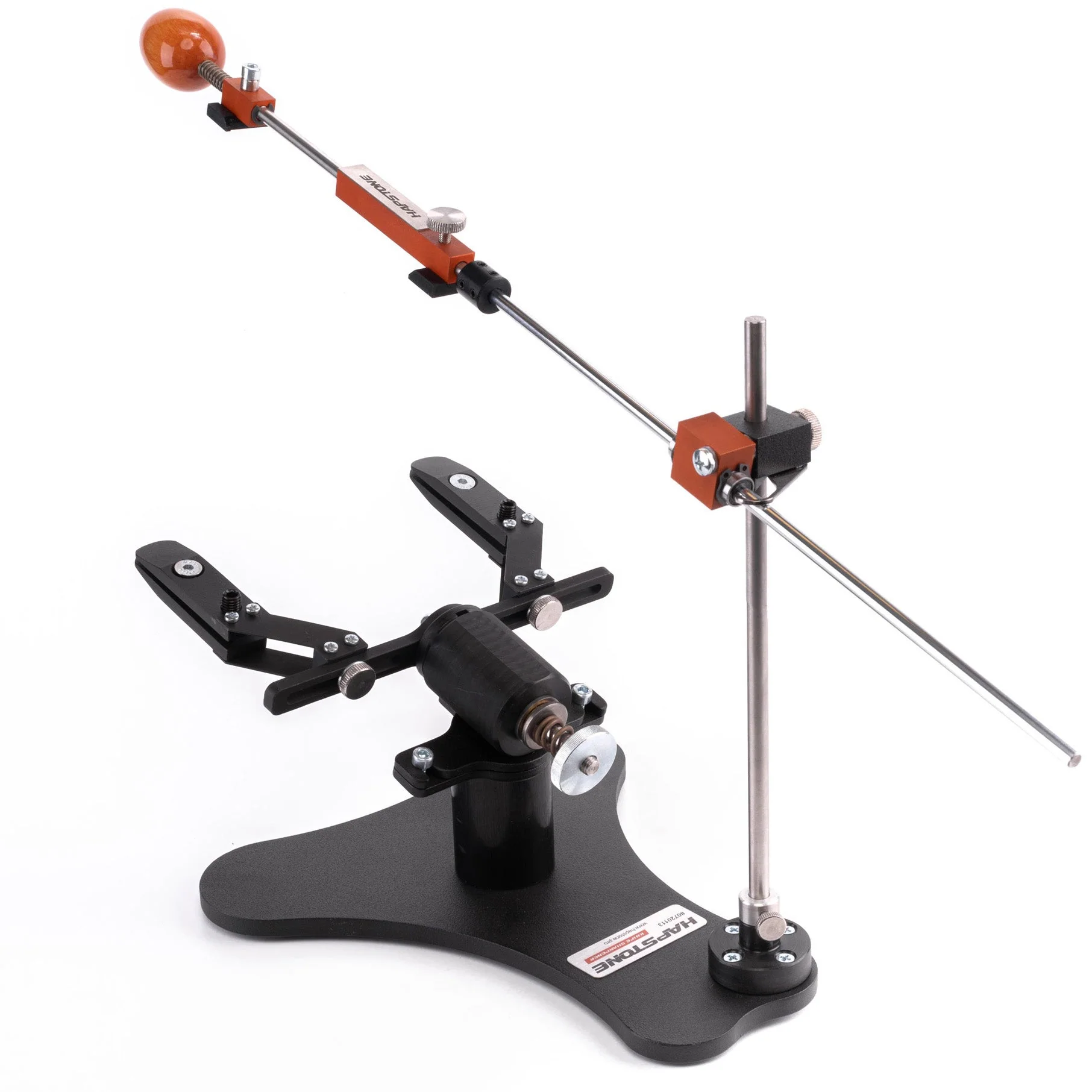Answer

Jan 27, 2023 - 09:12 AM
Q - On my longer blades (6” - 9”) I’ve found that when I rotate the blade while sharpening I’m getting an an angle difference of 2 degrees or more. The angle is consistent each individual side of the blade but when I flip it there is a 2 degree difference from the other side. Any advice or adjustments?
A - This could be a number of things. Firstly, make sure the knife is securely clamped and there is no up and down wobble at all when secured in the clamps. Secondly, most knives are not perfectly symmetrically ground so this often also makes a difference. Thirdly, your clamps could possibly be slightly out of alignment - they can be tuned and adjusted if needed but shouldn't be necessary unless they are grossly misaligned. Fourthly, your knife edge itself could be ground out of alignment of the centre of the blade - look at the edge bevel size on both sides and see if they are the same size, this is normally a giveaway. Lastly, your angle cube has to be right in the center of the clamp bar, perpendicular to the clamps and perfectly straight. If your angle cube is rotated to one side or the other (clockwise or anticlockwise), it cannot measure angles accurately at all because it doesn't have the capability of 3 axis measuring. This is very important to understand.
Some tips that may help - You should always pick only one side of your knife to position on the knife and stone to set + adjust sharpening angle because of all the variables involved. If you try to adjust your angle every single time you flip the rotating clamp bar to the other side, can end up endlessly chasing your tail in circles unnecessarily and your knife won't be any sharper when you try to do it this way. In fact, your knife will likely not be as sharp because of all the angular adjustments and fiddling while you were sharpening.
Personally, I always position any knife I sharpen with the handle facing to my right, with the stone seated in the stone clamp and placed on the center of the blade and in center of the stone. Angle cube perpendicular to the sharpening plane / clamps. I sharpen one side, then the other side without checking or adjusting the angle on the opposite side. When I need to swap stones then I will go back to my original position with the handle facing to my right. Then I readjust the angle to the original angle if necessary - for example after swapping to a stone that has a different thickness.
Hope this helps!
A - This could be a number of things. Firstly, make sure the knife is securely clamped and there is no up and down wobble at all when secured in the clamps. Secondly, most knives are not perfectly symmetrically ground so this often also makes a difference. Thirdly, your clamps could possibly be slightly out of alignment - they can be tuned and adjusted if needed but shouldn't be necessary unless they are grossly misaligned. Fourthly, your knife edge itself could be ground out of alignment of the centre of the blade - look at the edge bevel size on both sides and see if they are the same size, this is normally a giveaway. Lastly, your angle cube has to be right in the center of the clamp bar, perpendicular to the clamps and perfectly straight. If your angle cube is rotated to one side or the other (clockwise or anticlockwise), it cannot measure angles accurately at all because it doesn't have the capability of 3 axis measuring. This is very important to understand.
Some tips that may help - You should always pick only one side of your knife to position on the knife and stone to set + adjust sharpening angle because of all the variables involved. If you try to adjust your angle every single time you flip the rotating clamp bar to the other side, can end up endlessly chasing your tail in circles unnecessarily and your knife won't be any sharper when you try to do it this way. In fact, your knife will likely not be as sharp because of all the angular adjustments and fiddling while you were sharpening.
Personally, I always position any knife I sharpen with the handle facing to my right, with the stone seated in the stone clamp and placed on the center of the blade and in center of the stone. Angle cube perpendicular to the sharpening plane / clamps. I sharpen one side, then the other side without checking or adjusting the angle on the opposite side. When I need to swap stones then I will go back to my original position with the handle facing to my right. Then I readjust the angle to the original angle if necessary - for example after swapping to a stone that has a different thickness.
Hope this helps!





Add New Comment